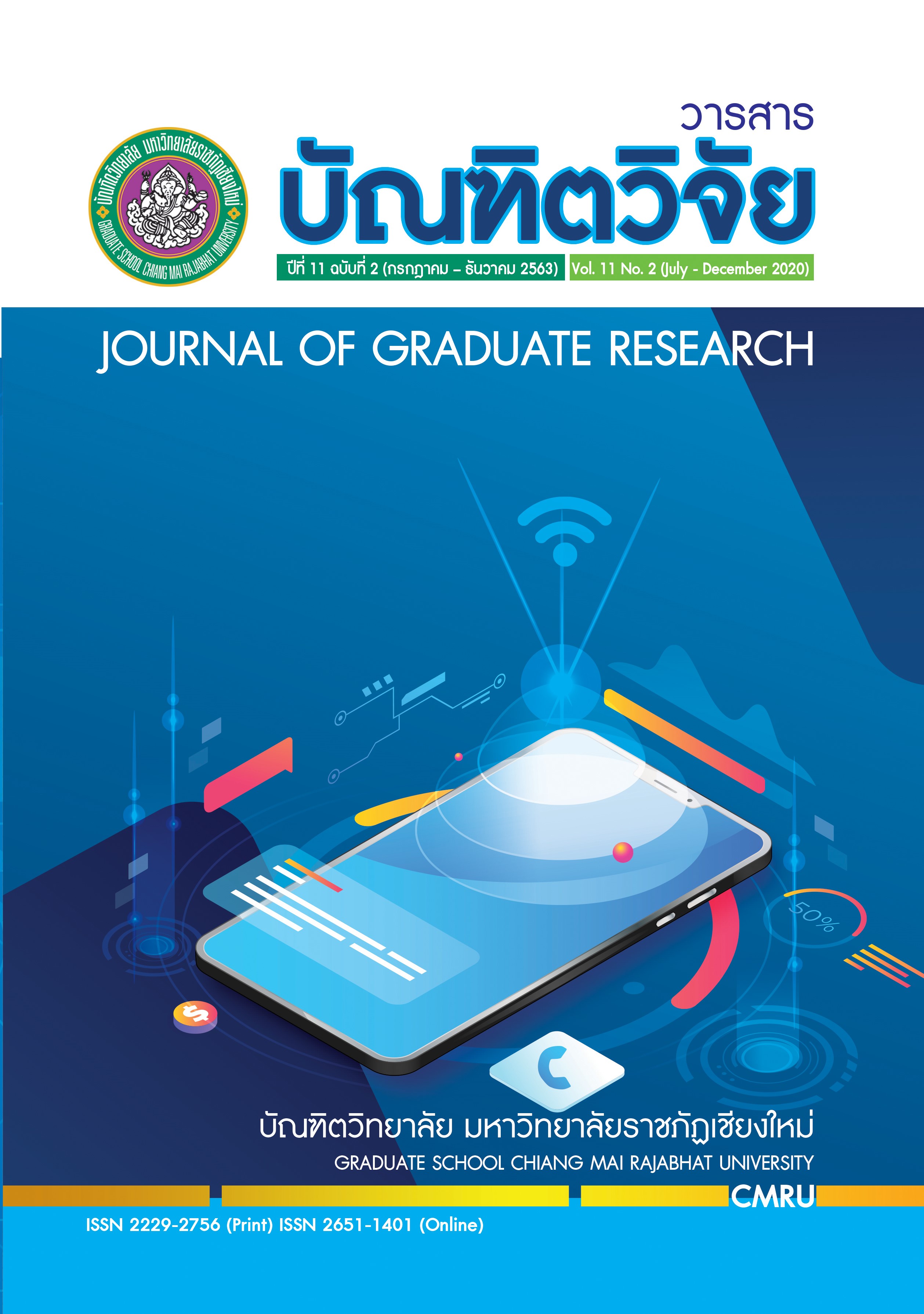Cognitive Learning Behavior Based on the Concept of Bloom’s Revised Taxonomy
Main Article Content
Abstract
Cognitive domain contains learning skills predominantly related to the mental skills and the acquisition of knowledge of an individual, such as memorizing, understanding of stories or things, solving problems and thinking creatively, which is a definitive sign of a person’s intelligence. Teachers should therefore devote much attention to learning management that emphasizes the development of cognition at higher order thinking because it will enable them to learn effectively and acquire practical skills. The revised version of cognitive domain has two dimensions. The first dimension is knowledge dimension which is composed of four aspects: factual knowledge, conceptual knowledge, procedural knowledge and metacognitive knowledge. The second dimension is cognitive process dimension which is composed of six levels: remembering, understanding, applying, analyzing, evaluating, and creating. If teachers have an intimate knowledge and thorough understanding of the particular learning behaviors of each level in Bloom’s hierarchy, they will be able to deliver effective lessons that focus on leaners’ cognitive development from surface learning to deep learning, which could be optimally advantageous to learners. Those effective lessons will enable them to develop their critical and thinking skills, with a focus on constructing new knowledge that would lead them to become competent learners.
Downloads
Article Details
References
เชาว์ อินใย. (2556). การวัดและประเมินผลการศึกษา. มหาสารคาม: โรงพิมพ์มหาวิทยาลัยราชภัฏมหาสารคาม.
สำนักงานคณะกรรมการการศึกษาขั้นพื้นฐาน, กระทรวงศึกษาธิการ. (2554). แนวปฏิบัติการวัดและประเมินผลการเรียนรู้ตามหลักสูตรแกนกลางการศึกษาขั้นพื้นฐาน พุทธศักราช 2551. กรุงเทพฯ: โรงพิมพ์ชุมชนสหกรณ์การเกษตรแห่งประเทศไทยจำกัด.
สำนักงานคณะกรรมการการศึกษาแห่งชาติ. (2562). พระราชบัญญัติการศึกษา 2542 แก้ไขเพิ่มเติม (ฉบับที่2) พ.ศ. 2545 (ฉบับที่ 3) พ.ศ. 2553 และ (ฉบับที่4) พ.ศ. 2562. กรุงเทพฯ: โรงพิมพ์ชุมชนสหกรณ์การเกษตรแห่งประเทศไทยจำกัด.
Anderson, L.W. & Krathwohl, D.R. (2001). A Taxonomy for learning, teaching, and assessing: A Revision of Bloom’s taxonomy of educational objectives. New York: Addison Wesley Longman.
Bloom, B.S., Englehart, M. D., Furst, E. J., Hill, W. H., and Krathwohl, D.R. (1956). Taxonomy of education objectives, handbook I: The Cognitive Domain. New York: David McKay Co Inc.


